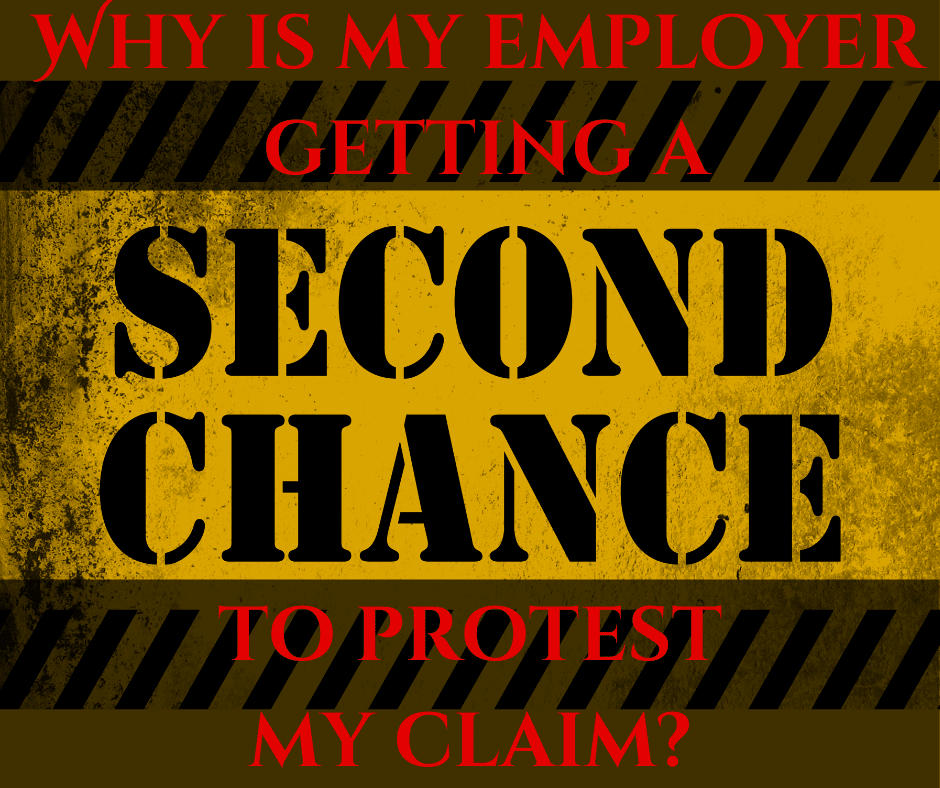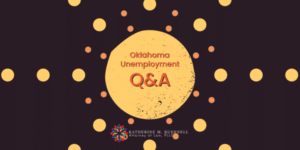Recently I’ve had several people ask me about why their employer is getting a second chance to protest their unemployment claim. I’ve noticed that they have something in common: they all filed their weekly claims and they did not receive a decision about their job separation when they first filed.
We are all aware that OESC is WAY behind in processing claims but they’re not 6 months behind. As of the date of this writing (February 2021), most folks are receiving decisions in the 10-to-14-week window. This is far beyond the US Department of Labor’s goal to have decisions issued within 21 days, but the pandemic has caused a delay in processing of claims.
The Normal Claim Process
Typically, when you first file your claim, a Notice of Application for Unemployment Compensation (OES-617) is mailed to your former employer. According to 40 O.S. 2-503, the employer has 10 calendar days to submit a written response to the claim. If the employer does not submit their response within that 10-day period, they lose their appeal rights to whatever decision OESC makes on your claim (called “interested party” status).
However, even if the employer sends in a response late, OESC will still use the information to decide whether you meet the requirements to receive benefits. You can tell if the employer is an interested party on your separation decision by whether you see the employer’s name and address listed to the right of yours on the letter that says you were allowed or denied benefits.
What I Suspect May Be Happening Now
Your employer gets only one chance to protest your claim. This should have happened when you first filed your claim. But as I’m sure you’ve noticed, nothing is happening in the typical way. I’ve come to realize that, in these pandemic times, the rules don’t always apply the way we expect them to apply.
Many of the claimants I’ve talked to recently are at the end of their first type of benefits (usually state/regular/traditional unemployment). Based on my prior experience working at OESC during the 2008-2009 recession and how things happened with extended benefits then, I suspect that new Notices of Application are being mailed to employers by mistake when claimants apply for the next type of benefit (PUA, PEUC, etc). Why is it a mistake? Because the employer already got a notice that these claimants applied for unemployment months ago when they first filed their claims.
The second group of claimants that seem to be getting caught up in this mess is those who are at the end of their benefit year. In other words, it’s been one year since they first applied for benefits and their claim has “expired.” In order to continue receiving benefits (if entitled to do so), these claimants have to reapply, or establish a new benefit year claim. OESC doesn’t always have a way to bypass mailing the Notice of Application in these cases, so a new Notice gets mailed. Again, this is a mistake if the employer previously received a Notice when the claim was first filed.
What Happens Next?
As the employers’ protests arrive at OESC, adjudication codes or “stops” get added to the claims. These stops are intended to prevent claims from paying out when they aren’t supposed to pay, i.e. prevent you from having a massive overpayment if you shouldn’t have received unemployment. That’s a good thing, right?
But the problem is that OESC is still WAY behind in adjudicating claims. Once a stop goes on the claim, it gets thrown into the adjudication process and the claim has to get in line and wait its turn. Each and every claim has to be reviewed by someone within OESC to see if the employer is trying to get a second chance to protest the claim or if something got missed at the beginning of the claim. If something got missed when the first Notice mailed, OESC is required by state and federal law to make a decision about whether you should receive benefits and backdate it to the proper date. BUT that doesn’t mean the employer gets appeal rights. If you think the employer should not be an interested party to your determination, book a consultation here and we can discuss it. Employers are still bound by the requirement to send in a written protest to the first Notice.
Expect to Get an Overpayment
If you got a determination denying benefits after you received any amount of unemployment benefits, you should expect to also receive a Notice of Overpayment for every type of benefit you received. In other words, you’ll have separate overpayments for state benefits, PUA, PEUC, the $600 payments, etc. Overpayments come with appeal rights just like your separation decisions. For more information concerning overpayments see my post here.
Your Next Step
If you have additional questions about this or anything else in the claim process, please let me know. I’m always happy to help if I can!


